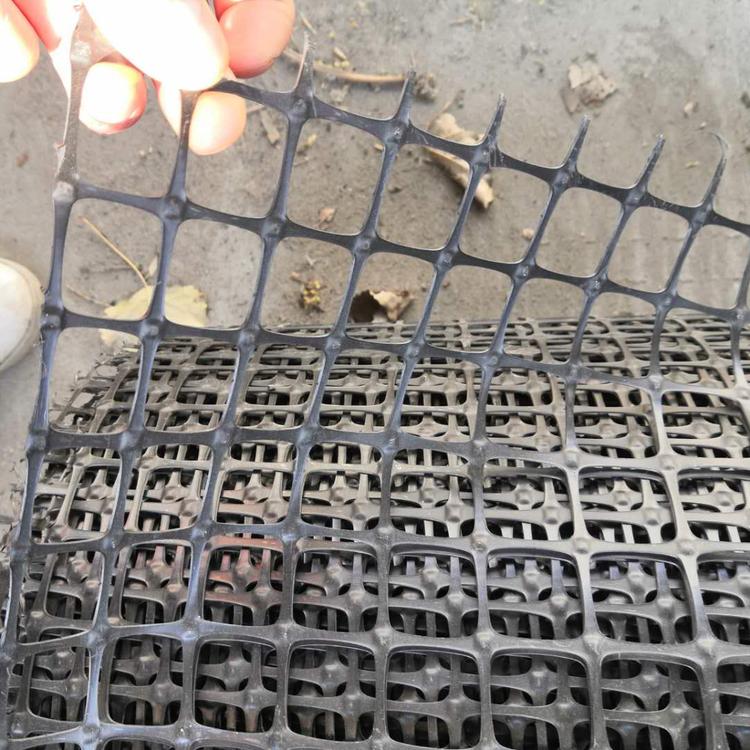

GeogridWhen used for roadbed and pavement, the construction method is the same as that of bidirectional geogrids. When used for reinforced soil retaining walls, the construction method is as follows: set up a foundation and construct according to the designed wall system. When using precast reinforced concrete panels, they are generally supported on precast concrete foundations with a thickness of 12-15 cm. Its width shall not be greater than 30 cm, thickness shall not be less than 20 cm, and buried depth shall not be less than 60 cm to prevent the influence of foundation frost heave. Flat wall foundation, excavated and leveled according to design requirements. Soft soil needs to be compacted or replaced, and compacted to the required density, which should slightly exceed the range of the wall.
When laying reinforcement materials, the main strength direction of the reinforcement material should be perpendicular to the wall surface and fixed with pins. For wall filling, mechanical filling should be used, and the spacing between the wheels and the reinforcement should be maintained at least 15 cm. After compaction, a layer of soil is approximately 20-15 cm thick. During wall construction, geotextile should be wrapped around the wall to prevent soil leakage. Geogrid reinforcement technology is a commonly used technique in the construction process of highway reconstruction and expansion roadbed widening projects. Geogrids are primarily used to reinforce soft soil embankments, retaining walls, and embankments. By selecting geogrids for reinforcement, the bearing capacity and stability of the roadbed structure can be significantly improved. Geogrid, as a flexible material, can withstand relatively large tensile forces.
By placing the geogrid in the tensile deformation area of the soil, the tensile stress of the soil can be effectively transmitted, thereby forming a tensile component of the steel structure. Under the influence of load factors, the frictional force between the soil and the geogrid will to some extent constrain the lateral deformation of the soil. Due to the high degree of adhesion between the soil and the geogrid, the shear stress and tensile strength of the structure have been improved, and the combination direction of the new and old roadbed as well as the settlement of the embankment cross-section have been improved, thereby achieving the goal of preventing the occurrence of transverse and longitudinal cracks.
